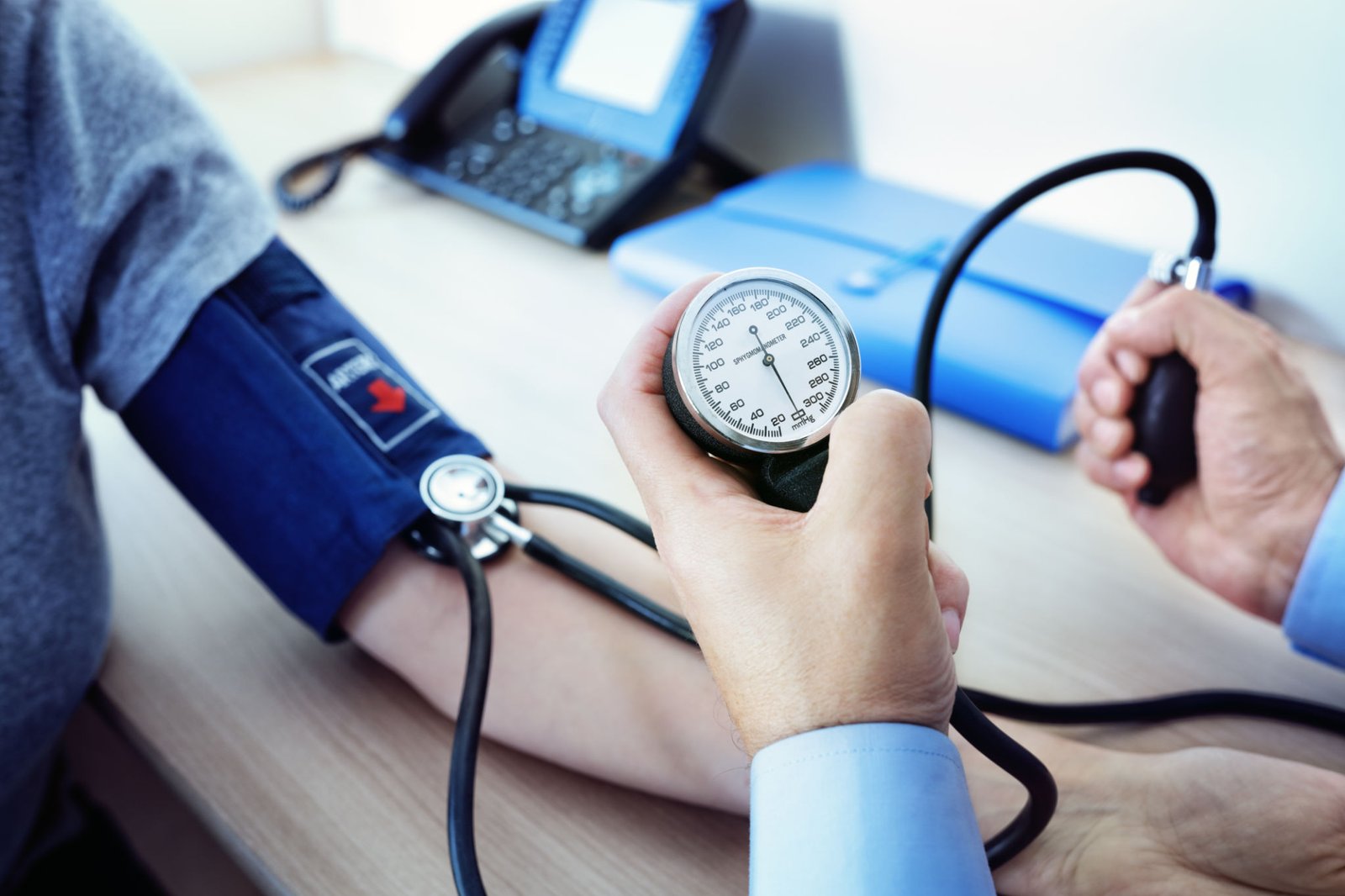Blood pressure is the force exerted by the blood while it flows through the blood vessels, when this pressure crosses a certain amount it’s referred to as Hypertension. The amount of force exerted is dependent on two factors which are the amount of blood the heart pumps in a single beat and how narrow the blood vessels are.
This blood pressure is measured in millimeters(mm) of Hg(Mercury) and has two phases.
– Systolic Pressure: This is the pressure exerted on the arteries when the heart contracts/beats which should normally be around 120mm Hg.
– Diastolic Pressure: This refers to the pressure that exists in the arteries in between two successive heartbeats.
Hypertension doesn’t produce any noticeable symptoms for the first few years, but it keeps on degrading the delicate organs and over a period of time, it can cause serious health ailments like heart attack and stroke.
What causes hypertension?
On the basis of whether the high blood pressure is a direct result of an underlying complication or is it a natural occurrence due to aging, hypertension is categorized into two types:
– Primary hypertension: This type of hypertension is doesn’t have any underlying condition and hence its actual trigger point is unknown, as per the trends, primary hypertension is developed during the normal course of aging.
– Secondary hypertension: In this type, high blood pressure has an underlying condition leading to it. The increase in pressure caused by this type of hypertension is higher than that of primary hypertension. The most probable underlying cause of this hypertension are:
– Renal disorders
– Problems in thyroid
– Genetic defects
– Certain drugs and medications
– Trouble in breathing during sleep
What are the symptoms of hypertension?
As we already now understand, during the first few years, hypertension has no visible symptoms, i.e, even though the blood pressure will be touching its alarming levels but there will be no visible complications until the damage has been done.
The only symptoms one may experience are headaches, difficulty in breathing, and nosebleeds, but these only occur when the blood pressure reaches life-threatening levels.
Method of diagnosis and grading
During the testing, the doctor asks the past medical history of the patient and then goes for a physical examination. The doctor will then wrap an inflatable instrument around the arm and use a pressure-measuring gauge to take the blood pressure. For confirmation purposes, the blood pressure should be taken in both arms. It is critical to utilize the correct-sized arm cuff.
The results obtained from the test can be categorized into four categories which are as follows:
– Normal blood pressure: If the blood pressure is less than 120/80 mm Hg, it is considered normal.
– Elevated blood pressure: The diagnosis falls in the category when the systolic pressure belongs to the range of 120 to 129 mm Hg and the diastolic pressure is less than (but not more than) 80 mm Hg. This type of blood pressure needs to be taken seriously and proper lifestyle changes should be adopted because it has a tendency to become serious if not handled properly.
– Hypertension(Stage I): When the systolic pressure is in the range of 130-139mm Hg, and the diastolic pressure is in the range of 80-89mm Hg, the diagnosis is said to have shown Stage I Hypertension.
– Hypertension(Stage II): When the systolic pressure is in the range of 140mm Hg and the diastolic pressure is in the range of 90mm Hg and higher, the diagnosis is said to have shown Stage II Hypertension.
– Hypertensive Crisis: If the diagnosed blood pressure comes in the range of 180/120 mm Hg, it becomes a medical emergency, which should be taken very seriously. If this reading is obtained, a second test must be performed after 5 minutes to confirm the accuracy of the reading then, one should be taken to a hospital for immediate treatment.
Methods of treatment for hypertension
Changing the way of life can help one control and manage their high blood pressure. Apart from the medications, the doctor may also suggest the following changes in the lifestyle
– Eating a heart-healthy, low-salt diet
– Participating in frequent physical activity
– Keeping a healthy body weight or reducing weight if one is overweight or obese
– Limiting the alcohol consumption
There are times when lifestyle changes are not effective in managing blood pressure, then medicines are required.
Among the medications for treating high blood pressure are:
– Diuretics: Also known as water pills, Diuretics are drugs that aid in the elimination of excess electrolytes and fluids by the kidneys. These medications are frequently the first to be tested in their effectiveness in managing high blood pressure.
– ACE and ARBs: Medications such as angiotensin-converting enzyme inhibitors also known as ACE inhibitors, are used to relax the blood vessels by restricting the natural formation of the enzyme that instructs the body to narrow the blood vessels.
Angiotensin II receptor blockers also known as ARBs, produce results similar to ACE inhibitors and that is relaxing the blood vessels by restricting the action of the enzyme that tells the body to narrow the blood vessels.
– Calcium channel blockers: These medications help by relaxing the muscles of blood vessels and also by slowing the heart rate.
Additional medications may include Alpha-blockers, Alpha-beta blockers, Beta-blockers, Vasodilators, etc.
What you can do now to be safe?
– Consume Balance Diet: Get a proper diet consisting of fruits, vegetables, and whole grains. Limiting the amount of saturated and trans fat and consuming surplus potassium can aid in preventing high blood pressure
– Limit sodium intake: Excessive consumption of salt is shown to lead to hypertension.
– Maintaining a healthy weight: With every kilogram of weight you lose, the blood pressure drops by 1mm Hg.
– Regular exercise: Doing physical activity daily can help reduce blood pressure by 5-11mm of Hg.
– Limit Alcohol and smoking: Alcohol is shown to increase blood pressure in healthy individuals and smoking contains tobacco which degrades the walls of the blood vessels and increases the rate of plaque build-up.
– Practising mindfulness: Breathing exercise and meditation goes a long way in improving the overall quality of life of an individual, and it significantly lowers the risk of hypertension.











